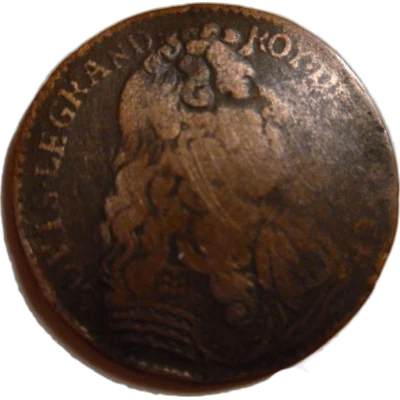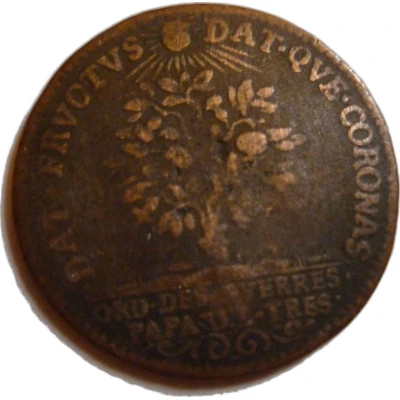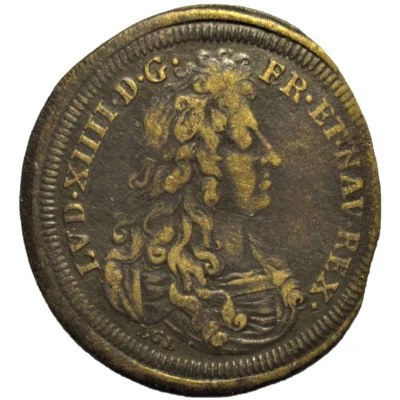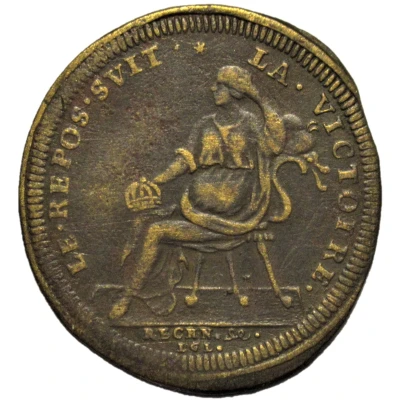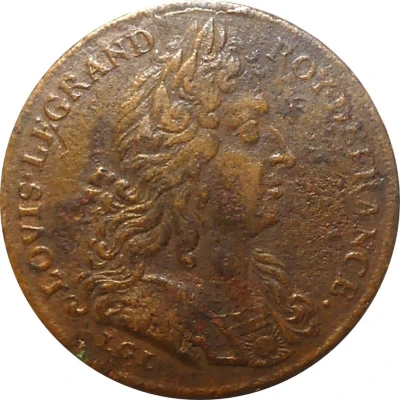
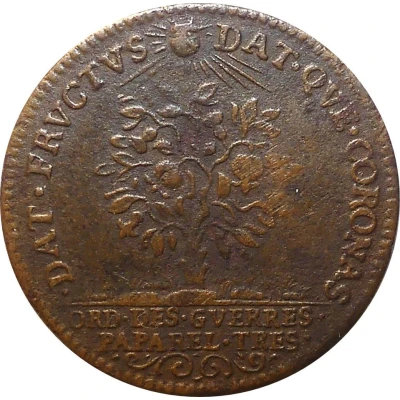

© Collector 86 (CC BY-NC-SA)
Rechenpfennig - Louis XIV - Ordinaire des guerres - Dat Fructus Dat Que Coronas ND
1683 year| Copper | 5 g | 25 mm |
| Location | Free imperial city of Nuremberg (German States) |
|---|---|
| Type | Utility items › Counter tokens |
| Year | 1683 |
| Composition | Copper |
| Weight | 5 g |
| Diameter | 25 mm |
| Thickness | 1 mm |
| Shape | Round |
| Technique | Milled |
| Orientation | Coin alignment ↑↓ |
| Demonetized | Yes |
| Updated | 2024-11-14 |
| Numista | N#26594 |
|---|---|
| Rarity index | 75% |
Reverse
A large central pomegranate tree laden with fruit, below a radiating sun. Lettering around, lettering and scroll in exergue. Toothed border
Script: Latin
Lettering:
· DAT · FRVCTVS DAT · QVE · CORONAS
ORD · DES · GVERRES · PAPAREL · TRES ·
Translation:
It gives fruit, and it gives crowns
Ordinaires des Guerres, Paparel Treasurer
Engraver: Lazarus Gottlieb Lauffer
Edge
Plain
Comment
Tresoriers Militaires des Armees (Military treasurers of Armies).The Sun probably represents Louis XIV (the Sun King) who is supplying the good things in life.
Paparel the Treasurer-General of the Ordinaires des Guerres had these jetons made in Germany for use in France, which just happened to be illegal at that time.
The Ordinaires des Guerres was the oldest channel for military expenditure, reaching back to the mid-fifteenth century foundations of the standing army. By the 1660's it covered all expenditure that had been thought necessary in peacetime a hundred years earlier. The efforts of the crown to overhaul the fortresses and artillery, and the rapid growth in forces in the 1620's and 1630's, relegated the Ordinaires des Guerres to lowly secondary significance as it came to be dwarfed by its precocious sibling, the Extraordinaire. Moreover the Ordinaire was in a state of great confusion throughout the seventeenth century and the accounts were, in some cases, in atrocious states of neglect dating back to the 1590's. It handled around 2 million livres per annum by the end of the century, on which some commission was taken by its Treasurers-General. Until 1669 the two Treasurers-Generals had served together as a team, but henceforth they would alternate each year in office. The most significant of these men were Claude Paparel and his son and successor Francois, who between them spanned Louis XIV's personal rule, and who were closely related to La Touanne Treasurer-General of the Extraordinaire Des Guerres from 1686 to 1701.
